Alexander's legendry status is closely tied to his equally famous horse, Bucephalus
Bucephalus and Alexander the Great: The Bond That Conquered the Ancient World
Alexander the Great is remembered as one of history’s most formidable military leaders, but his legendary status is closely tied to his equally famous horse, Bucephalus. More than just a warhorse, Bucephalus symbolized Alexander’s courage, intelligence, and unbreakable determination.
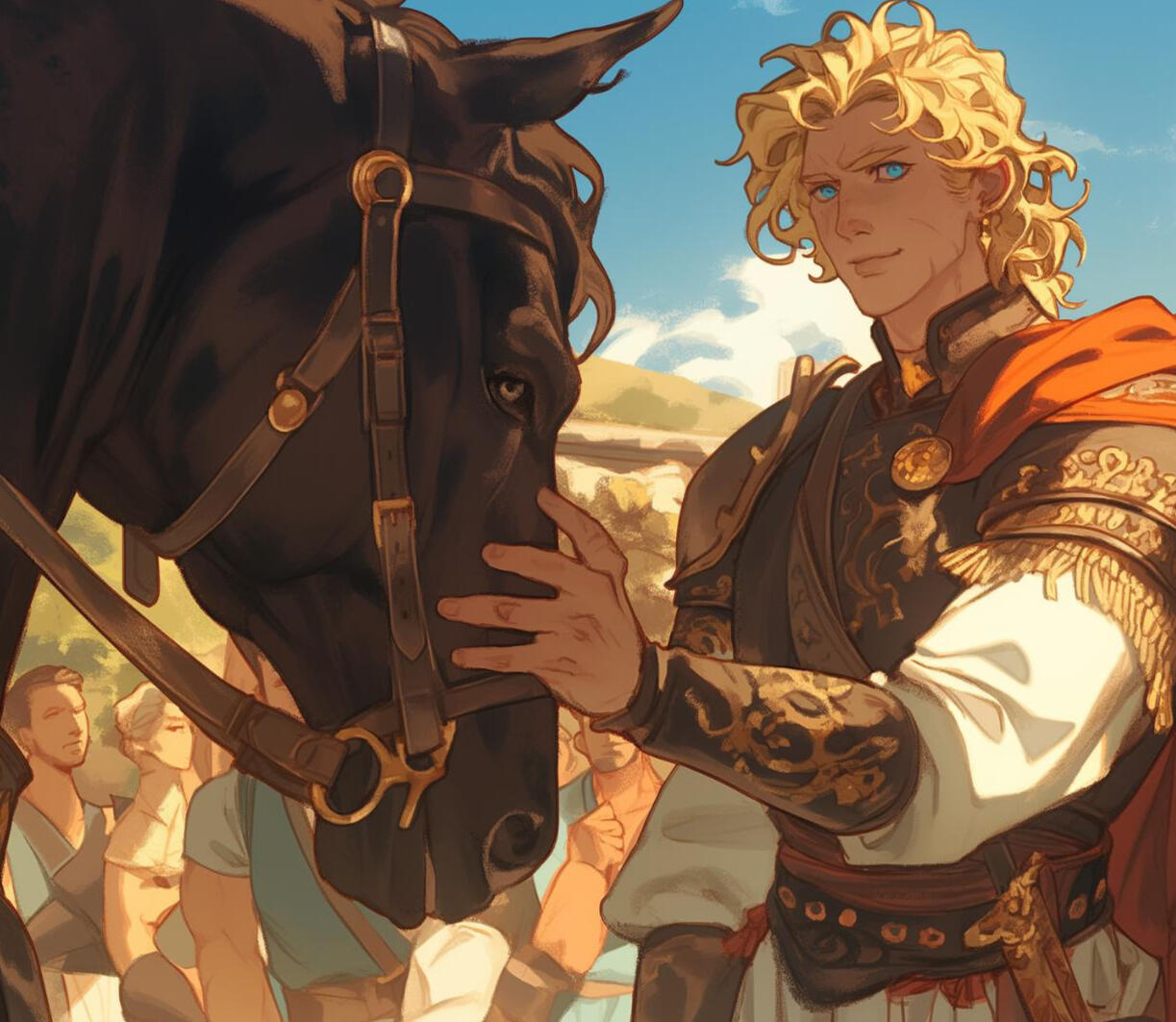
Bonded by Fate
Their bond, forged in childhood and lasting through countless battles, became a defining part of Alexander’s story. From the moment a young Alexander tamed the supposedly untamable stallion to the day the horse died after years of fierce campaigning, their partnership captured the imagination of historians, artists, and storytellers for over two millennia.
Every Great Man has a Great Horse
This article explores Bucephalus's life, the remarkable role he played in Alexander’s conquests, and why their legendary connection remains one of the most enduring tales of the ancient world.
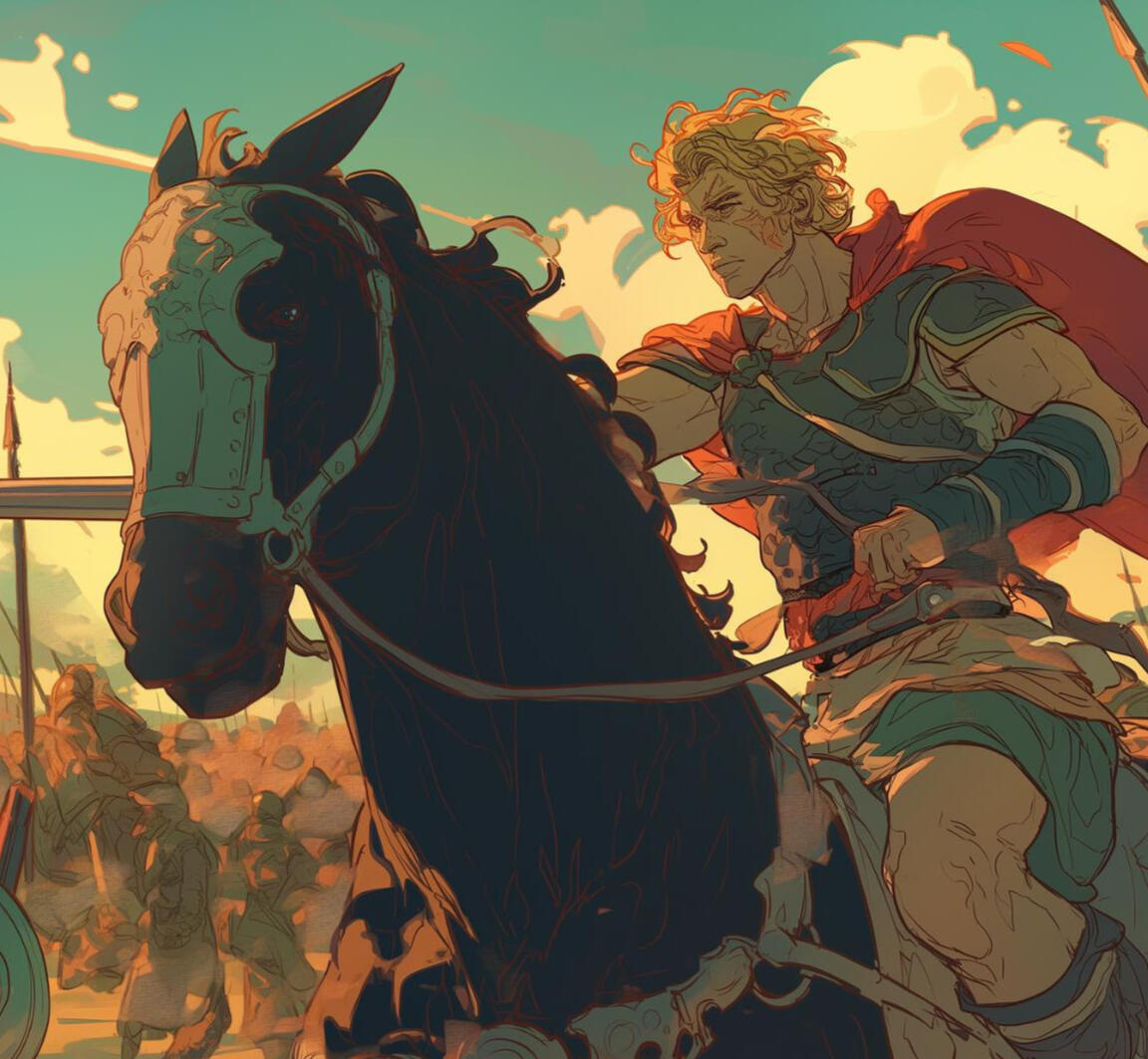
Early Life of Alexander the Great
Alexander the Great is widely regarded as one of the most famous figures in ancient history. He was born in Pella, the capital of the ancient kingdom of Macedon, in 356 BC. His father, King Philip II, was a strong ruler who united most of the Greek city-states under Macedonian rule.Alexander inherited a robust and disciplined army and a culture shaped by Greek traditions. From a young age, he showed remarkable leadership abilities. Under his father’s guidance, he learned the art of warfare and administration.Alexander’s achievements transformed him into a legend even in his own lifetime. Over the centuries, many stories have grown around his life and deeds. Some may be exaggerated, but most historians agree that his feats were truly extraordinary for his era, setting him apart from many other leaders in antiquity.In ancient Macedon, power was often secured through strong military forces. Philip II’s leadership had already laid the foundations for this. When Alexander was still a child, it became clear that he had both the will and the charisma to command.Even before he reached adulthood, he was often entrusted with responsibilities beyond what one might expect for someone so young. This early immersion in matters of state and military affairs prepared him for the challenges he would later face as the ruler of a vast territory.
The Reign of King Philip II and Macedonian Strength
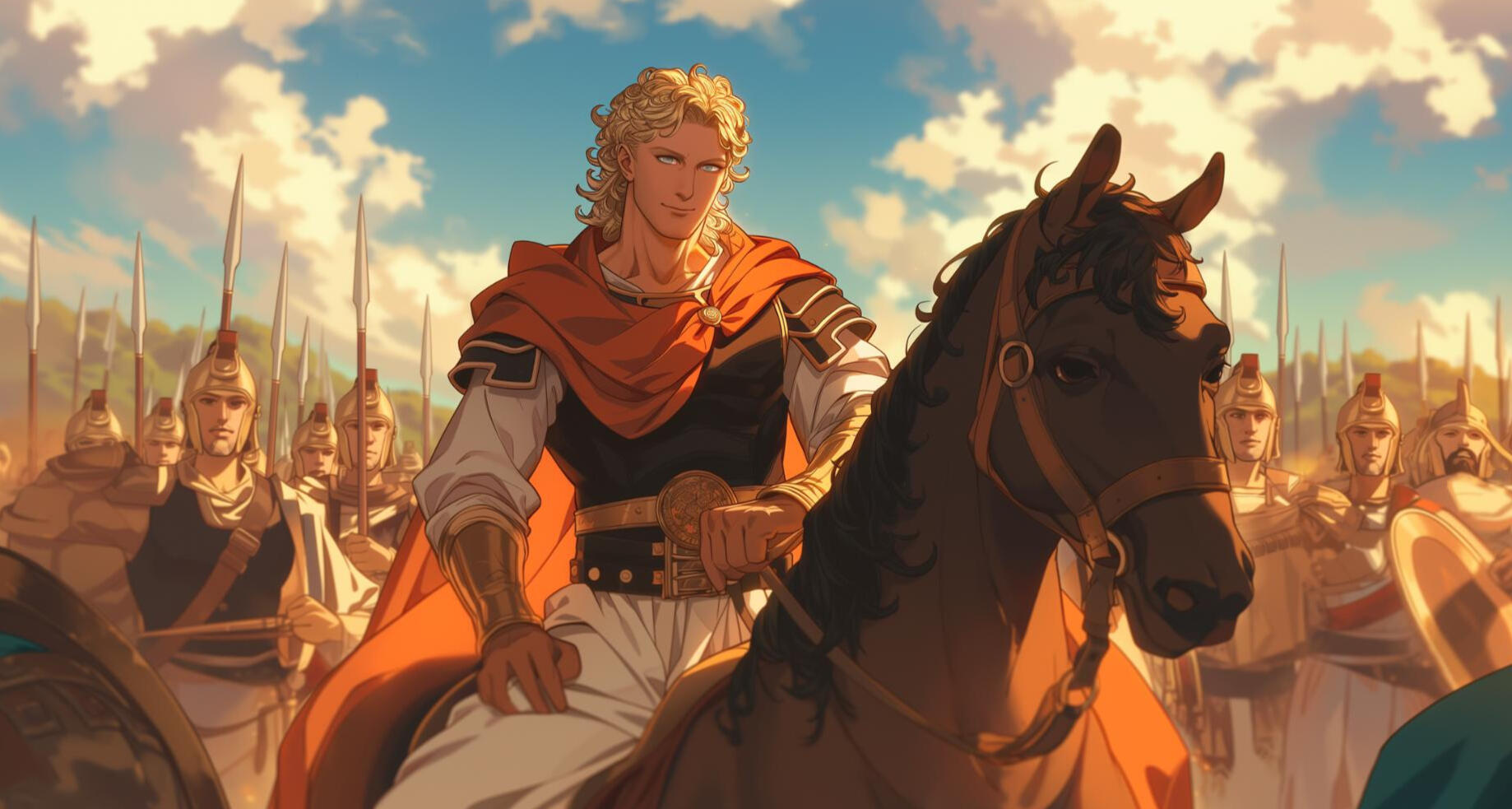
Before Alexander was born, Macedon was not considered a major power compared to some of its neighbors. However, King Philip II changed that. He restructured the Macedonian army, introducing the famous phalanx formation that used very long spears called sarissas.This innovation gave Macedonian troops a reach advantage over traditional hoplite armies. Philip also used a blend of diplomacy and alliances to strengthen his position in the wider Greek world.By the time Alexander came of age, Macedon was far more unified than before, and its military was highly respected among the Greek city-states. It was in this environment that Alexander grew up, learning strategy and tactics not just from theory but also through observation of his father’s maneuvers.He became aware of the political dynamics that often pitted Greek states against each other or brought them into uneasy alliances. These formative experiences molded Alexander into a young leader who understood that raw power was only one ingredient for success.By the mid-4th century BC, Philip II had either conquered or formed alliances with most of mainland Greece. This meant Alexander would inherit an ambitious and capable state once he took the throne.Although he learned many lessons from his father, Alexander ultimately expanded Macedon’s reach in ways that even Philip might not have imagined. The modern view is that Philip laid the groundwork, while Alexander seized opportunities to go much farther, shaping the story of a leader whose name still resonates in historical discussion.
Aristotle as a Mentor
One important influence on Alexander’s early education was the philosopher Aristotle. King Philip II hired Aristotle as a private tutor for his son, and this arrangement lasted for several years, usually placed at a quiet location away from the distractions of the court.Aristotle was one of the most prominent thinkers of his time, having studied under Plato and contributed to numerous fields of knowledge.In Alexander’s lessons, Aristotle covered ethics, science, politics, biology, and literature, among other subjects. Such broad exposure had a deep impact on Alexander’s view of the world.Although Alexander later became known primarily as a military leader, he retained a lasting interest in scholarly pursuits and was open to new ideas throughout his life. He is said to have carried classic works of literature during his campaigns, reflecting a genuine taste for learning.Some accounts suggest that Alexander and Aristotle had a complex relationship. Early on, Alexander greatly admired Aristotle, but as he grew older and became more independent, tensions may have arisen, especially when Alexander adopted foreign customs that Aristotle, with his Greek-centered worldview, might not have fully supported.Even so, the overall impact of Aristotle’s teaching was significant. It gave Alexander a framework to think about governance and ethics, setting him apart from many conquerors who placed brute force above all else.
Alexander Takes the Throne
Alexander’s life took a major turn when King Philip II was assassinated in 336 BC. Although the exact motives behind this assassination are still debated, many sources point to conspiracies within the court or disputes involving Philip’s personal life.Whatever the cause, Alexander moved swiftly to consolidate power and eliminate any threats to his succession. At the young age of 20, he became the new king of Macedon.Some Greek city-states saw Philip II’s death as a chance to assert their independence or break away from Macedonian dominance. Alexander refused to allow this. He marched south, confronted any sign of revolt, and quickly reminded the various Greek regions that Macedon was still in charge. By re-establishing the Hellenic League, he secured their reluctant cooperation under his command.Once Greece was subdued, Alexander began planning a bold new move: to invade Persia. This decision had roots in Philip II’s ambitions, as Philip had already considered a campaign against the Persian Empire before his untimely death.Alexander’s personal drive, combined with the well-trained Macedonian army and the resources at his disposal, set the stage for one of the most famous military expansions in recorded history.
Moving Against the Persian Empire
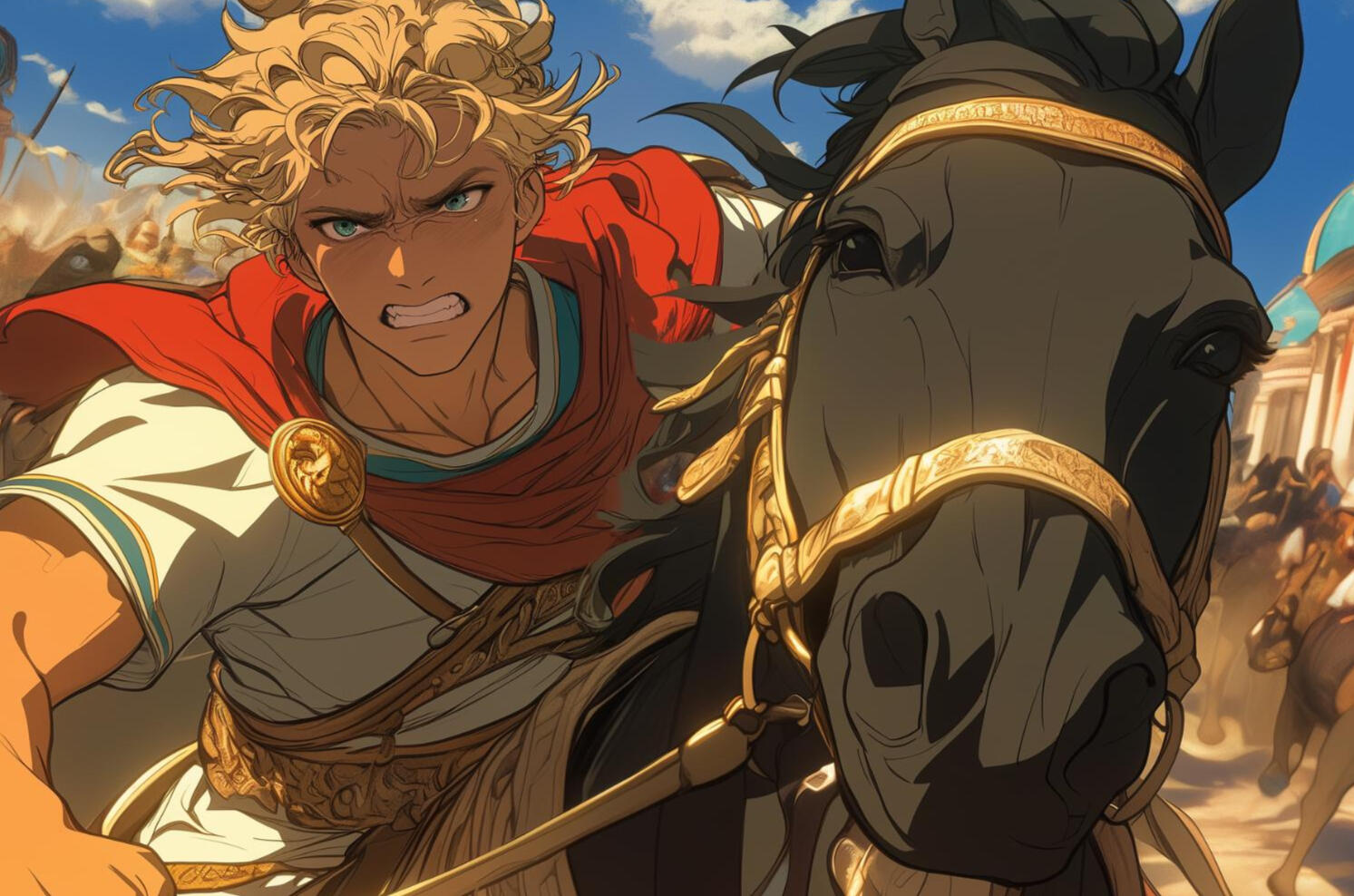
The Persian Empire was vast, spanning from the eastern Mediterranean to parts of Central Asia. However, by the time Alexander turned his attention east, internal power struggles and governance problems plagued the empire.The reigning king, Darius III, faced issues maintaining control over distant territories, and Alexander believed he could exploit these weaknesses.In 334 BC, Alexander led an army of approximately 35,000 Macedonians and Greek allies across the Hellespont into Asia Minor. This campaign started with the Battle of the Granicus River, where Alexander won a swift victory over Persian satraps.The success at Granicus boosted morale within his ranks and demonstrated to local populations that the Macedonians were serious contenders against Persian authority.As Alexander moved south and secured coastal cities along Asia Minor, he encountered mixed reactions. Some welcomed him as a liberator from Persian rule, while others remained cautious or hostile.In either case, Alexander’s practice of setting up local governance structures or installing trusted officials showed a mix of strategic occupation and attempts to win over local populations. He was determined not just to defeat the Persian military but also to replace Persian influence with his own, creating a lasting hold over the lands he seized.
Battles at Issus and the Approach to Egypt
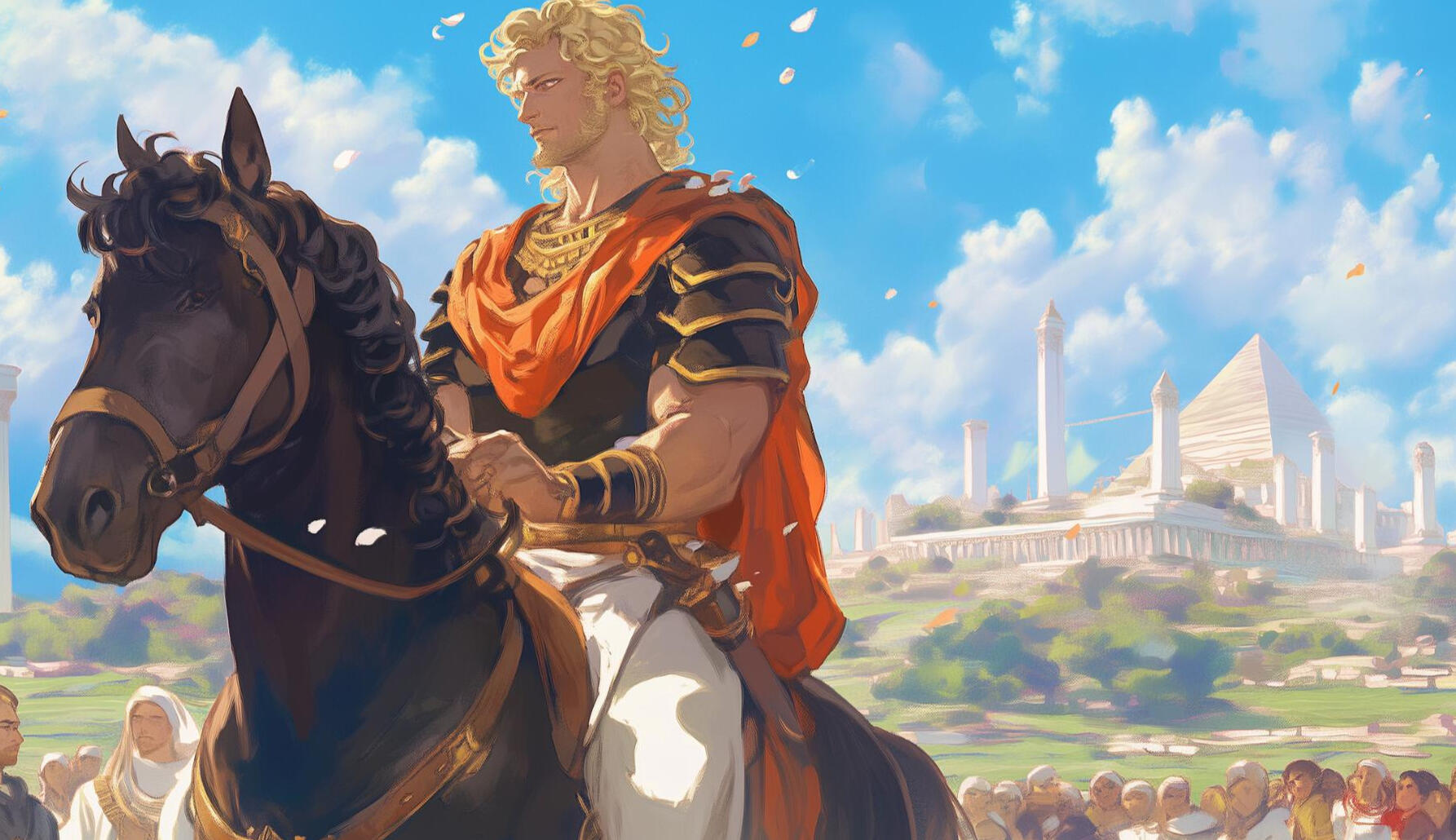
Following his initial successes in Asia Minor, Alexander encountered Darius III at the Battle of Issus in 333 BC. This fight took place in a narrow coastal plain, which negated much of the advantage the larger Persian army might have had.Alexander’s disciplined phalanx and cavalry again proved decisive. Despite facing numerical disadvantages, he achieved a crushing victory. Darius fled the battlefield, leaving behind members of his own family, whom Alexander treated respectfully.This act of kindness, whether motivated by genuine compassion or political calculation, helped Alexander’s reputation. He then turned toward the eastern Mediterranean coastline, securing the Phoenician cities, including the critical port of Tyre.After Tyre fell, Alexander moved into Egypt. Persian control there had become unpopular, and many Egyptians saw Alexander’s forces as an escape from oppressive rule. In 331 BC, Alexander founded the city of Alexandria on the Nile Delta.Alexandria would later become a major center of Greek culture, science, and commerce, attracting a diverse population of merchants, scholars, and artists.
The Fall of the Persian Capital
Satisfied with the order he established in Egypt, Alexander advanced once more to confront Darius III. The decisive meeting came at the Battle of Gaugamela in 331 BC, located in what is now northern Iraq.This conflict was considered one of Alexander’s most impressive victories because Darius assembled a massive force of war chariots, cavalry, and infantry. Yet, Alexander’s well-drilled units managed to outmaneuver the Persian lines.Darius fled the battle again, and his authority rapidly crumbled. Alexander then took control of major Persian cities like Babylon, Susa, and Persepolis. The capture of Persepolis was a symbolic triumph, as it was a ceremonial capital of the Achaemenid Persian Empire.Ancient accounts say that Alexander allowed his troops to plunder Persepolis, and the city was set on fire—possibly as retaliation for earlier Persian invasions of Greece or due to rash behavior following victory celebrations. The exact reason is still debated, but the event marked the end of the Persian Empire as it had existed for over two centuries.With the heartland of Persia under Macedonian control, Alexander possessed unimaginable wealth. Large amounts of gold and silver were brought into his treasury, enabling him to maintain and expand his army. The speed and magnitude of his conquest amazed both his allies and his enemies, and news of his successes spread far and wide.
Entry into the Indian Subcontinent
Alexander’s push did not end with the old Persian boundaries. In 326 BC, he crossed into the Indian subcontinent, reaching the region of the Punjab. There, he faced various local rulers. The most famous confrontation took place at the Hydaspes River, where he met King Porus.This battle introduced Alexander’s troops to war elephants, which at first frightened the Macedonian cavalry and infantry. Yet Alexander’s planning allowed his forces to counteract the elephants’ charge and drive Porus’ men back.Impressed by Porus’ courage, Alexander reportedly reinstated him as a vassal, allowing him to continue governing under Macedonian oversight. This approach was somewhat typical of Alexander: once a foe had been subdued, he often preferred to keep local rulers in place as long as they recognized his sovereignty. It was a practical way to manage distant territories without having to install entirely foreign administrations.However, the campaigns in this region proved taxing for Alexander’s army. They had traveled a great distance from their homeland, faced unfamiliar climates, and fought repeated battles.Frustration and weariness set in among the Macedonian ranks. The troops finally refused to go any farther east, forcing Alexander to relent. Although he might have wanted to extend his rule deeper into the subcontinent, the risk of complete mutiny was too high.
The Return West
With his men unwilling to continue, Alexander agreed to head back. Dividing his forces, some went by sea along the Makran coast under the command of Nearchus, while Alexander led the rest overland through what is now southern Pakistan and Iran.This journey was fraught with hardships, including extreme heat and lack of water. According to accounts, many died in the barren deserts, and Alexander himself reportedly suffered greatly.Upon returning to the Persian heartland, Alexander sought to consolidate his empire. He introduced administrative changes, planned additional cities, and tried to unite the various subject peoples.He also held a massive ceremony in Susa to promote marriages between his Macedonian officers and Persian noblewomen, an action that continued to stir resentment among some of his companions.Despite internal tensions, Alexander was still brimming with ambition. He prepared to launch new expeditions, possibly targeting Arabia or regions north of the Caspian Sea. Yet these plans were not to be realized. The Macedonian king was about to face the end of his short but momentous life.
Sudden Illness and Death
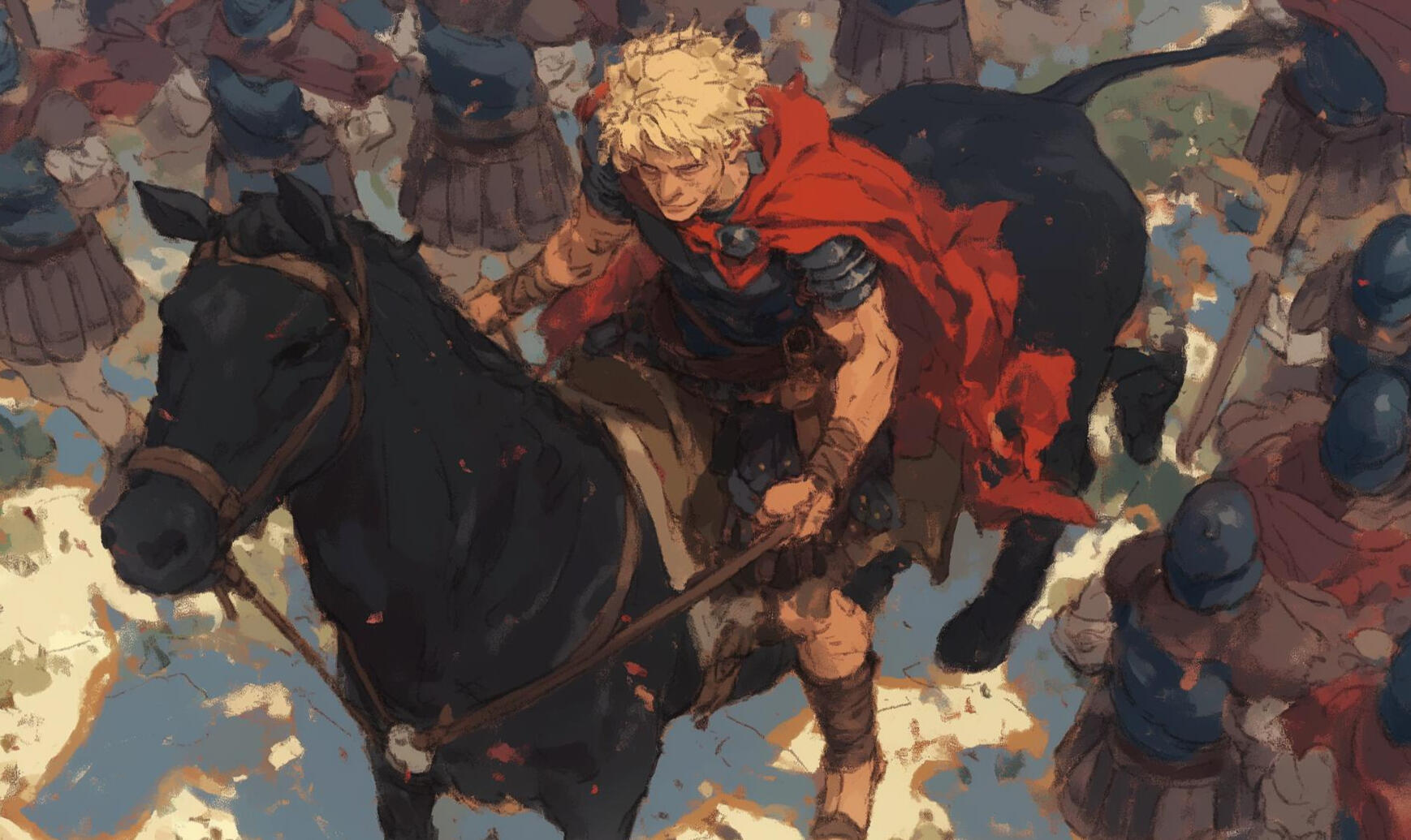
In 323 BC, while in Babylon, Alexander was struck by a serious illness. The exact nature of this illness remains uncertain. Historians have proposed various theories: malaria, typhoid fever, complications from battle wounds, or even deliberate poisoning.Ancient sources give conflicting reports, but it is clear that Alexander’s health deteriorated rapidly. Over a span of days, he lost the ability to speak and eventually died just shy of 33 years old.His death threw the empire into chaos. He had not designated a clear successor among his generals, known as the Diadochi. Although he had a newborn son with his wife Roxana, that child was too young to rule effectively.The vacuum in leadership led to immediate power struggles as his top officers partitioned the empire into separate territories. This fragmentation gave rise to the Hellenistic kingdoms, such as the Ptolemaic Kingdom in Egypt and the Seleucid Empire in Asia.While none of these successor states matched the size of Alexander’s combined empire, they all carried elements of the Greek influence that Alexander had spread.Alexander’s remains were initially placed in a gold sarcophagus, later transferred, and eventually ended up in Alexandria, though the exact location of his tomb is a matter of historical speculation.Even in death, his story attracted enormous attention and reverence, shaping how future generations viewed military conquest and kingship.
Lasting Legacy of Alexander the Great
Alexander is celebrated for multiple reasons. First and foremost, his military conquests drastically altered the power dynamics of the ancient world by toppling the long-standing Persian Empire.Second, he facilitated the spread of Greek language and culture across a vast stretch of territory, leading to a fusion of ideas known as Hellenistic civilization. Cities like Alexandria became major centers of learning, commerce, and intellectual exchange.The Greek language, in particular, served as a common medium for trade and scholarship. Philosophical texts, scientific treatises, and works of art circulated more widely, helping to advance knowledge in mathematics, astronomy, and other fields. This spread of ideas formed part of Alexander’s broader impact, even though he did not live long enough to see the full extent of these cultural changes.Critics point out that his campaigns led to massive violence, destruction, and loss of life, as is common in large-scale conquests. Still, many ancient and modern observers are drawn to the sheer scale of his ambitions and how quickly he achieved them.Alexander’s tendency to respect—at least nominally—local customs and to place trusted administrators in key positions contributed to a legacy that goes beyond mere brute force. In the centuries following his death, Hellenistic kingdoms carried on much of his approach, blending Greek ideas with those of the Middle East, North Africa, and parts of Asia.
Bucephalus: The Origins of a Legend
One of the most enduring aspects of Alexander’s biography is the story of his beloved horse, Bucephalus. The horse’s name is commonly translated as “ox-head,” though the exact meaning is still debated among scholars.The best-known account of how Alexander got Bucephalus comes from the writer Plutarch. According to that tale, a horse dealer named Philonicus presented Bucephalus to King Philip II, but the horse seemed wild and uncontrollable. Philip was skeptical about buying an animal that no one could handle.However, the young Alexander noticed that Bucephalus was anxious because of its shadow. Alexander calmed Bucephalus by turning him to face the sun. This clever solution impressed everyone, including Philip II, who gifted the horse to his son as a reward.From that moment onward, Alexander and Bucephalus became a famous pair. Their bond signified the unique qualities Alexander had shown from childhood: courage, observational skill, and a knack for identifying the root cause of a problem.
Physical Traits and Characteristics of Bucephalus
Descriptions of Bucephalus vary in ancient sources, but many portray him as a large, strong, black stallion, often with a notable white mark on his forehead. Some say he had an ox-head brand, which may have contributed to his name.In an era when cavalry was key, a powerful and loyal warhorse was a priceless asset. Bucephalus was admired for his swiftness, stamina, and willingness to obey commands under pressure.The horse’s fame grew in parallel with Alexander’s. As Macedon’s armies advanced, word of the impressive black stallion and his fearless rider spread far. In the thick of battle, horse and rider had to trust each other completely, especially when facing the chaos of ancient combat.This bond became legendary, as it symbolized Alexander’s unwavering resolve. While many stories might be embellished, there is no doubt that a commander of Alexander’s stature valued a mount that would stand fast under any conditions.Bucephalus fit that role perfectly, reinforcing Alexander’s image as a leader favored by fortune and destined for great deeds.
Taming the “Untamable” Horse
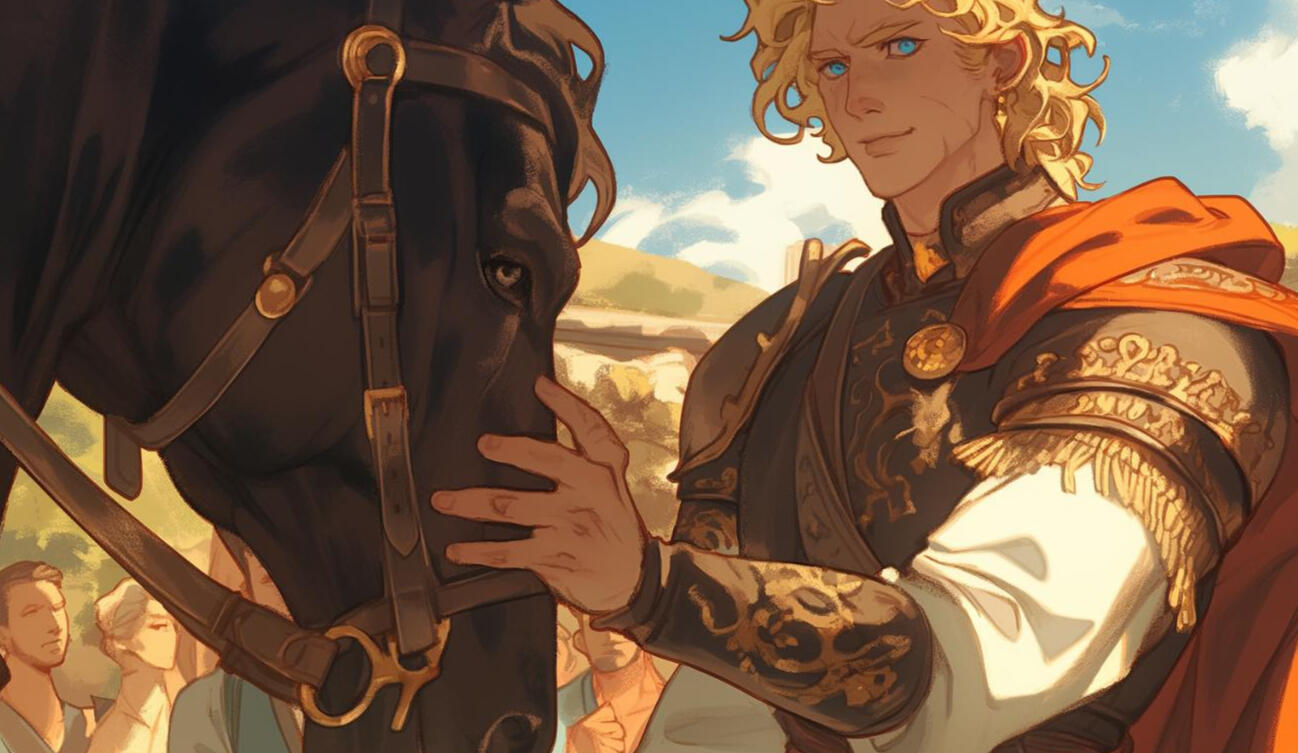
The story of how Alexander tamed Bucephalus represents more than just a youthful exploit. It also highlights the qualities that would define Alexander’s later actions.Rather than using sheer force, he employed a simple but clever tactic—turning the horse’s face away from its own shadow. By showing empathy for the horse’s fear, Alexander demonstrated that compassion and strategic thinking could go hand in hand.Some historians question whether the story is entirely accurate or partly symbolic. Ancient authors often included heroic anecdotes to emphasize the character of great rulers. However, even if the details were dramatized, the moral lesson remains relevant: Alexander succeeded not by overpowering Bucephalus but by understanding him.In a broader sense, this small event foreshadowed how Alexander sometimes dealt with the regions he conquered. By assessing local customs and concerns, he often found ways to maintain control without igniting constant rebellions.
Bucephalus in Battle
Bucephalus accompanied Alexander on many campaigns. Traditional sources place him at key battles such as the Granicus River and Issus. Although precise accounts of horses during ancient battles can be scarce or exaggerated, the repeated mention of Bucephalus in these sources implies that Alexander had a special fondness for this horse.In warfare, cavalry charges could decide the outcome of a conflict, and a swift, reliable mount was essential for executing flanking maneuvers, chasing down fleeing enemies, or even breaking an opposing line.Bucephalus proved to be sturdy and fearless. Ancient tales describe him as carrying Alexander into the heart of combat, facing soldiers, chariots, and elephants alike. Soldiers in the Macedonian ranks recognized this horse, and it boosted their morale to see their king perched atop a steed that seemed almost supernatural in its calm.Though many horses fell in the hazards of war, Bucephalus survived longer than most, which further fed the mystique around him. His resilience contributed to the horse’s legendary status, raising it from a mere mount to a near-mythic figure in the annals of antiquity.
The Death of Bucephalus
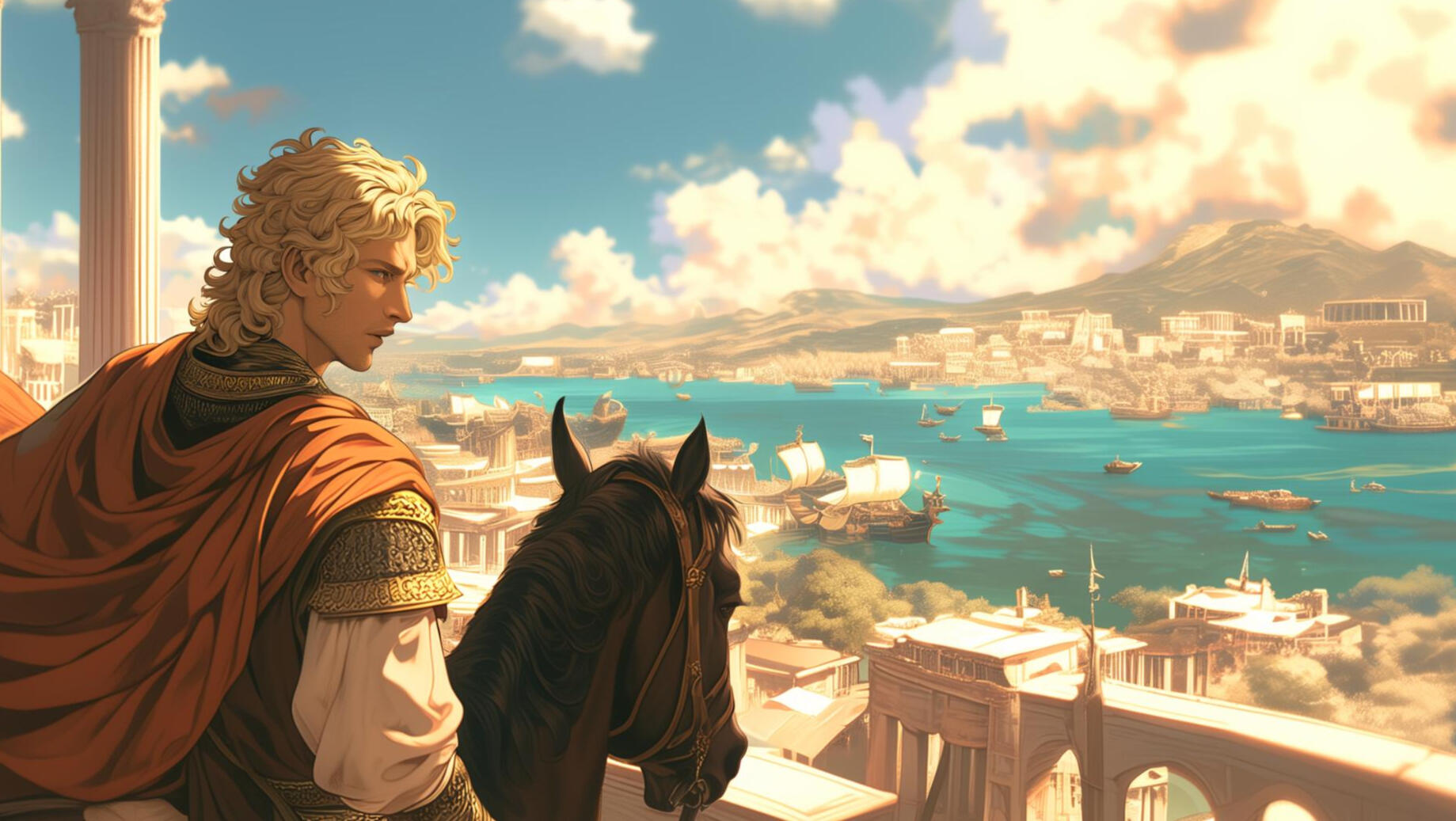
Precise details about Bucephalus’ death are not entirely clear. Some sources claim he died shortly after the battle against King Porus at the Hydaspes River in 326 BC, possibly from injuries. Others say he might have lived a bit longer.Still, the consensus is that he reached a point where either age or war wounds took their toll. Alexander, known to be a profoundly loyal individual to those close to him, took the horse’s death very hard.It is said that Alexander founded a city in the horse’s honor, often referred to as Bucephala, near the Hydaspes River. Creating a settlement named after a favorite companion was uncommon in ancient times, showing how much Bucephalus meant to Alexander.While some of this might be romanticized by historians wishing to dramatize Alexander’s affection, the repeated references in various accounts suggest at least a kernel of truth.Regardless of the exact circumstances, Bucephalus's death marked the loss of a steadfast ally who had carried Alexander through many pivotal conflicts.
Why Bucephalus Became So Famous
Over the centuries, Bucephalus has captured the imagination of historians, poets, and artists. Many warhorses have existed throughout history, but few achieved the legendary fame of this particular stallion.Bucephalus stands not just as a practical companion in war but also as a symbol of Alexander’s entire ethos. The recurring image of Alexander astride Bucephalus in literature and art represents courage, authority, and the ability to overcome obstacles.Ancient sculptures and coin designs often included references to Alexander on horseback, underscoring the horse’s significance in shaping his legacy. Because Alexander’s victories were so far-reaching and recorded by numerous chroniclers, Bucephalus emerged as an enduring emblem.Even after Alexander’s empire fragmented, the memory of his famous horse remained. Tales of how Bucephalus was acquired, how he was tamed, and how he stood by Alexander in countless battles turned into stories that have been retold and reinterpreted for centuries, fueling the image of Bucephalus as an almost heroic figure in his own right.
Conclusion
Taken together, the story of Alexander the Great and his horse, Bucephalus, is more than a simple account of historical figures. It captures the ambitions and achievements of an individual who reshaped large parts of the ancient world in just over a decade, and it shows how a single horse became a defining part of that saga.The military triumphs, cultural exchanges, and administrative policies all blend into a remarkable narrative. While Alexander’s empire did not stay intact long after his death, the cultural and intellectual influences he set in motion lasted for centuries.Bucephalus, for his part, highlights the importance of key relationships in shaping both real events and enduring legends. Their special bond transcended the typical role of an animal in warfare, becoming a story of trust and respect that still intrigues historians and readers alike.With this horse, Alexander achieved swift victories and showcased his brave style of leadership. Whether in the thick of battle or in the mythic recollections passed down through generations, the image of Alexander on Bucephalus is a powerful reminder of how the right companion can amplify a leader’s qualities.Even after more than two millennia, both figures continue to spark interest, proving that the partnership between a conqueror and a horse can become one of history’s most memorable themes.
© All rights reserved.